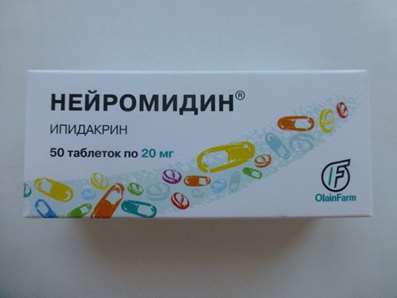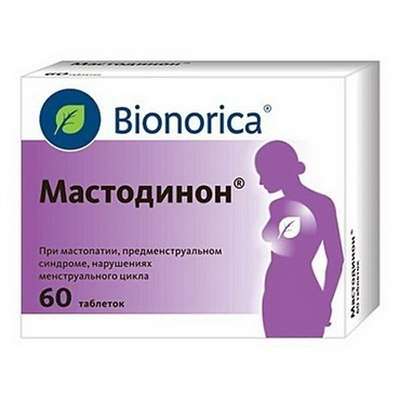Reactions of organism to repeated administration of medicines
21 Dec 2016
Usually pharmacological effect increases in proportion to dose augmentation. Concentration of medicine on a surface and in a cell can depend on the factors including rate of an absorption, distribution, transformation and removal therefore dependence between a dose and pharmacological effect can be linear (Ftorotanum), hyperbolic (Morphinum), parabolic (sulfanylamide drugs), sigmoidalny or S-shaped (Noradrenalinum).
Repeated administration of medicines can cause depression or rising of reaction of an organism on them. The lowered reaction of an organism to medicines (hypo reactivity) is called accustoming which is shown by tolerance or tachyphylaxis. The increased reaction of an organism (hyper reactivity) is shown by an allergy, sensibilization and an idiosyncrasy. At repeated administration of medicines special states — medicinal dependence which is also referred to the lowered reactions, and cumulation can develop.
Accustoming (tolerance, lat. tolerantis patience) is a depression of sensitivity to drug after its repeated introduction that demands dose augmentation to cause effect of the same intensity that took place after introduction of a smaller dose. Accustoming is a partial or total loss of therapeutic (medical) effect at prolonged use of medicine without the phenomena of medicinal dependence that is addiction development. For example, at introduction of the purgatives of a plant origin containing antraglikosida (a rhubarb root, a buckthorn cortex, leaves of Seine) in several weeks the purgative effect decreases. Accustoming is an all-biological property which can be observed also at microorganisms after use of small doses of chemotherapeutic drugs. It is possible to eliminate accustoming as augmentation (in available limits) doses, and replacement of drug or the termination by sometime of its use.
Fast depression of efficiency of medicine after repeated introduction which develops during time from several minutes to one days is called tachyphylaxis (with Greek tachys — fast and phylaxis — protection). Depression of hypertensive effect of ephedrine can be an example of tachyphylaxis. After the first administration of drug arterial pressure increases; after repeated 2 — 3 injections with an interval of 20 — 30 min. the vasoconstrictive effect considerably decreases. To a bowl accustoming to medicine develops slowly, within several weeks of constant reception. An addicting property hypnagogues (especially derivative barbituric acid), tranquilizers, narcotic analgetics, purgatives, etc. possess. To the drugs close on a chemical structure, accustoming (Promedolum, Morphinum) is also possible. Tolerance mechanisms are different. The arsenofagiya fact is abilities of the "trained" animals to accept inside large numbers of Arsen oxide without pernicious consequences is widely known. Accustoming in this case is caused by development of inflammatory processes in a mucosa of the digestive channel and decrease thereof poison absorptions. If to enter to such animal of Arsen oxide parenterally, lethal is even the minimum dose.
Induction by a medicinal preparation the micro zonal enzymes of a liver and acceleration of its own metabolism is the most frequent reason of accustoming. This mechanism prevails in development of accustoming to barbiturates. Tolerance to fosfororganic bonds is caused by depression of sensitivity of holino receptor to Acetylcholinum. Also the autougneteniye phenomenon similar to the enzyme inhibition phenomenon, known in biochemistry, substrate can be the cause of accustoming. The essence of a phenomenon consists that in case of surplus in a drug organism not one is bound to a receptor, and several molecules. The receptor "is overloaded" and the pharmacological effect appears much less. Tolerance shouldn't be identified with medicinal dependence.
Dependence on medicinal and other substances (addiction). According to conclusions of Committee of WHO experts medicinal dependence is a mental state, sometimes even physical which is result of interaction between a live organism and medicinal substance with certain behavioral and other reactions when desire to accept drug constant or arises periodically to avoid discomfort which arises without its acceptance.
Addiction is strong, sometimes the insuperable demand of systematic reception of some medicines and other drugs which cause euphoria (Greek eu — pleasantly and phero — to transfer), for rising of mood, improvement of health, and also elimination of the unpleasant feelings arising after cancellation of these agents. You can try Hepatamin.
The agents causing dependence can be divided into such groups: alcohol-barbituratov (ethyl alcohol, Fenobarbitalum); kanabina (marijuana, hashish); Cocainum; ethereal dissolvents (toluene, acetone, tetrachlormethane); the agents causing hallucinations (an acid, a mescaline, a psilocybin); the agents received from opium (Morphinum, codeine, heroin) and their synthetic substitutes (Promedolum, Fentanylum).
Dependence on several substances at the same time is possible.
Distinguish mental and physical dependence on medicinal substances. According to definition of WHO mental dependence is "a state at which medicine causes content and a mental eminence — a condition of euphoria which demands periodic or constant administration of medicine, for receiving content to avoid a discomfort"; physical dependence an adaptativny state to which intensive physical disorders after the termination of reception of a certain medicine are inherent. These disorders, i.e. an abstinence syndrome (Latin abstinentia continence; Xing. a syndrome an otnyatiya, deprivations) a complex of specific signs of the mental and physical disturbances characteristic of a certain narcotic analgetic.
The mechanism of this phenomenon is bound to the fact that owing to systematic introduction substance joins in the biochemical processes happening in an organism.
As a result the metabolism and functioning of tissues change. To such state the organism adapts gradually, framed the new, differing from usual, metabolic homeostasis. In case of the drug entering termination equilibrium of biochemical processes is broken. There is a serious condition (abstinence) various, often serious somatic disturbances (death is possible) which is liquidated only with renewal of administration of substance.
Are most sensitive to the changed brain cell conditions for this reason medicinal dependence is caused by the drugs influencing the central nervous system. Systematic use of narcotic analgesics with development of dependence is called drug addiction. Change of functions of a brain leads to consecutive development of conditions of an euphoric dream and abstinence. With intensifying of dependence the euphoric phase is reduced, the dream phase almost disappears; the phase of an abstinence changes and goes deep. The most serious picture of medicinal dependence develops when physical, mental dependence and tolerance are combined.
Cumulation (Latin of cumulatio is augmentation, accumulation) can be caused by accumulation in an organism of active agent (a material cumulation) or summits its effects (a functional cumulation). Sometimes the phenomenon of cumulation is used for achievement of appropriate therapeutic effect of medicinal substance (antibiotics, cardiac glycosides).
The material cumulation arises after repeated administration of medicines which are slowly removed from an organism (Fenobarbitalum). Frequent administration of such drugs leads to their accumulation and creation of high concentration in a blood and tissues that is followed by intensifying of effect, up to development of intoxication. Especially easily intoxication medicinal substances arises at an abnormal liver function and kidneys. Some cardiac glycosides (Digitoxinum), drugs of iodine, Bromum, an arsenic are slowly removed from an organism owing to strong communication with proteins of a blood plasma.
The functional cumulation is inherent, mainly, for strong psychotropic substances. These substances are removed from an organism quickly enough, but the functional changes caused by them don't disappear to repeated reception. On this background the subsequent dose strengthens effect. An example of after-actions of a functional cumulation disturbance of mentality and the progressing degradation of the person at alcoholics (delirium tremens, psychosis). Ethyl alcohol is a substance which quickly is oxidized and in tissues its neurotropic action isn't late, summarized.
Reception of cardiac glycosides is followed by the admixed cumulation.
In case of use of the substances capable to cumulation, at first prescribe a shock dose for creation of a certain therapeutic concentration in a blood (tissues), then pass to a maintenance dose, however now the drugs of cardiac glycosides received from plants for the prevention of side effects prescribe in maintenance doses.
Sensibilization (Latin sensibilisatio sensitive) is one of the reasons of high-quality change of effect (sensitivity rising) at repeated administration of medicines.
Practically all medicines under certain conditions, depending on specific features of an organism, are capable to form strong communications with proteins. A conjugation with medicine changes conformstion of albuminous molecules. These bonds act as a gapten who has property of an antigen capable to sensibilize an organism. Thereof, after one of repeated administrations of the corresponding medicinal substance instead of medical effect allergic reaction develops. It is observed at 15 — 30% of persons and is various in character and gravities: from mild implications on a skin to lethal anaphylactic shock. Most often the sensibilization is caused by antibiotics, sulfanylamide drugs, antidepressants, neuroleptics of fenotiaz series, B1 and B12 vitamins, mestnoanesteziruyushchy agents.
The increased reactions of an organism to administration of medicines are allergic reactions which can be divided into 4 types:
Type 1. The immediate type of allergic reactions develops within several hours after introduction of the allowing drug dose. The leading role is played by IgE the antibodies which are bound to an antigen on a surface of mast cells, leading them to degranulate, allocation of Histaminum. Are shown by urticaria, edemas, anaphylactic shock, etc. (cause Penicillinums).
Type 2. Cytolytic type of reactions when IgG and IgM — antibodies, activating system of a complement, interact with an antigen on a surface of formulated elements of a blood, causing their lysis (Methyldopa causes hemolitic anemia, Analginum — an agranulocytosis).
Type 3. Immune complex type of reactions when IgE is antibodies form complexes with an antigen and a complement which interact with an endothelium (damaging it). At the same time the serum disease which is shown fever, urticaria, an itch, etc. develops (cause Sulfanilamidums).
Type 4. The slowed-down type of allergic reactions in which the cellular mechanisms of immunity including sensibilized T lymphocytes and macrophages are involved. It is shown in the form of a contact dermatitis, for example when drawing on a skin of the irritating medicines.
The idiosyncrasy belongs to the increased reactions (Greek idios peculiar; synkrasis merge, mixing), i.e. the increased genetically caused reaction of an organism at introduction of medicines in small doses bound to insufficient activity of some enzymes. So, elongation of action of Dithylinum to 2 — 3 h is bound to hereditary failure of a cholinesterase of blood serum.

 Cart
Cart





